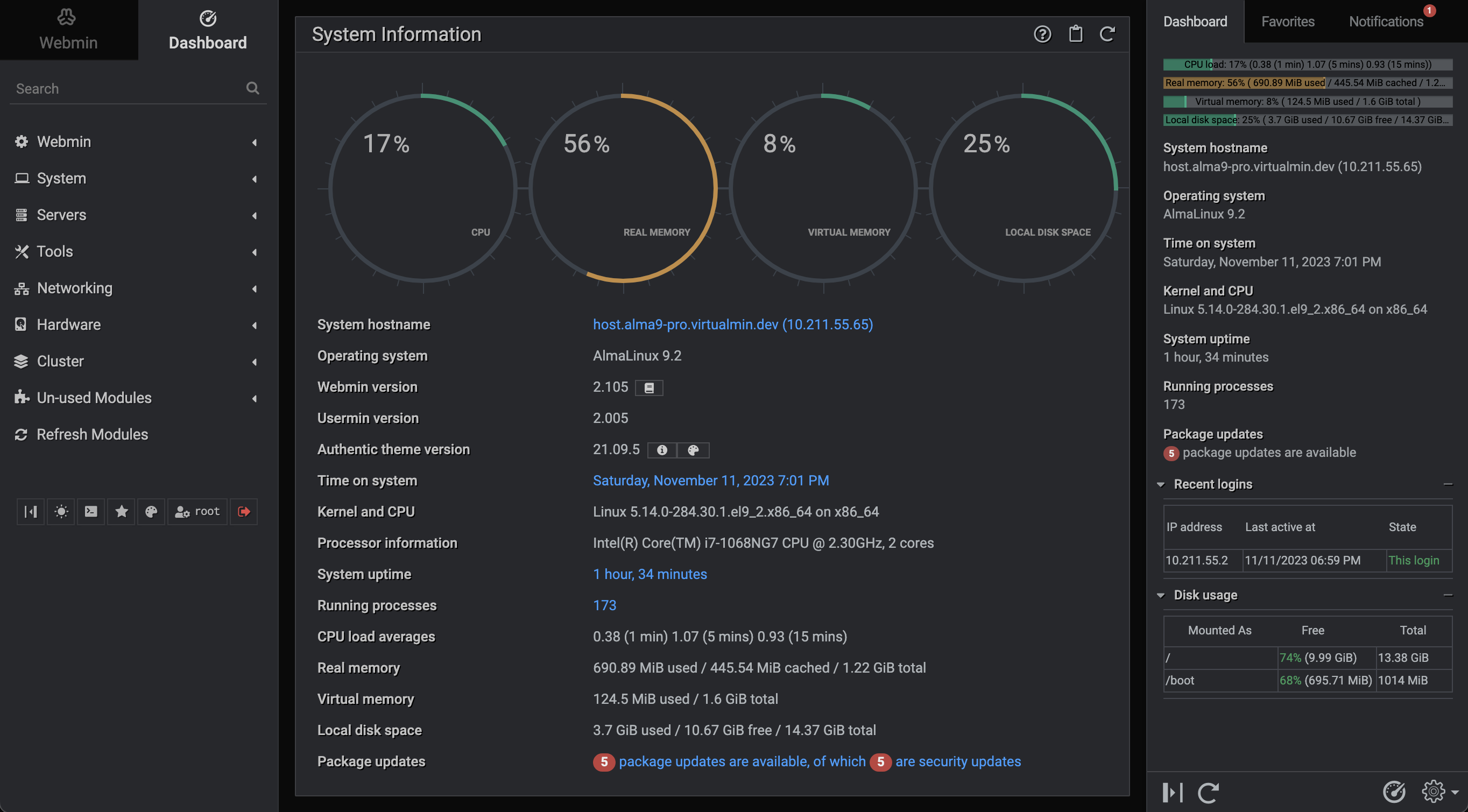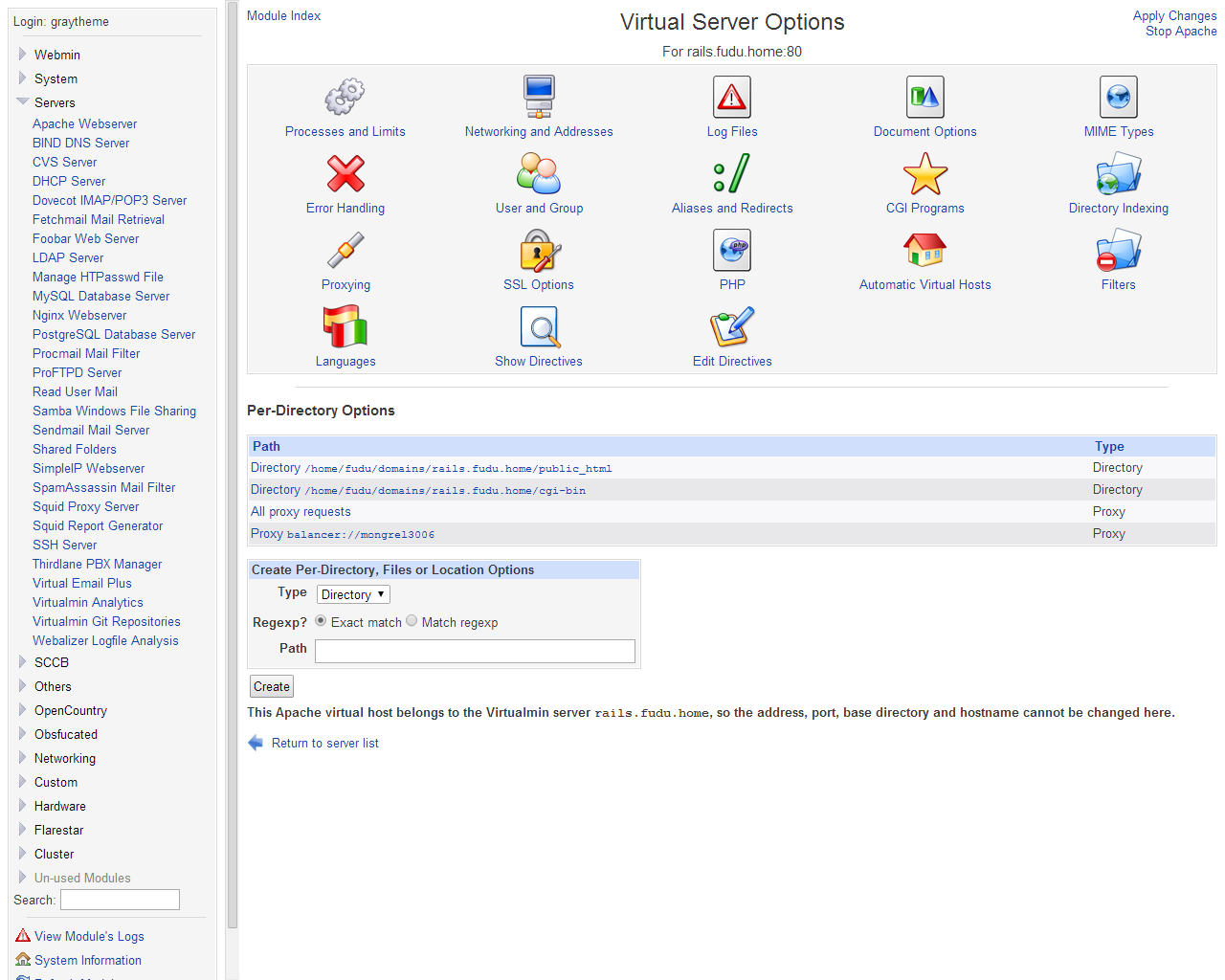Webmin
Streamlining System Administration with Webmin

Introduction
Welcome to our overview of Webmin, an open-source web-based interface for system administration of Unix-based systems. In this article, we will explore what Webmin is, its key features, who created it, the license it uses, and how it can simplify your server management tasks. This guide aims to inform and inspire users to adopt Webmin for efficient and user-friendly system administration.
What is Webmin?
Webmin is an open-source, web-based interface that allows users to manage Unix-based systems and servers through a browser. It provides a comprehensive suite of tools to perform various administrative tasks such as user account management, web server configuration, file sharing, DNS management, and more. Webmin is designed to simplify system administration, making it accessible even to those with minimal command-line experience. Since its initial release, Webmin has grown through contributions from a global community of developers and users, continuously evolving to meet the needs of its diverse user base.
Webmin is released under the BSD License, which allows users to freely use, modify, and distribute the software. This permissive license encourages innovation and collaboration, ensuring that the software remains transparent and community-driven. The open-source nature of Webmin provides users with complete control over their system administration tools, with the source code available on GitHub.

Key Features of Webmin
Key Features of Webmin
- User Account Management: Create, manage, and delete user accounts, groups, and permissions with ease, ensuring secure access control.
- Web Server Configuration: Configure and manage web servers like Apache and Nginx, including virtual hosts, modules, and SSL certificates.
- File Sharing: Set up and manage file sharing services such as Samba and NFS, enabling seamless file access across networks.
- DNS Management: Configure and manage DNS servers, including zone files and records, to ensure reliable domain name resolution.
- System Monitoring: Monitor system performance, view logs, and manage processes to keep your server running smoothly.
- Package Management: Install, update, and remove software packages using Webmin’s package management tools, supporting various package formats.
- Backup and Restore: Schedule and manage backups to ensure data safety and quick recovery in case of system failures.
- Customizable Interface: Personalize the Webmin interface with custom themes and modules to suit your specific administrative needs.
Why Choose Webmin for System Administration?
Choosing Webmin offers several benefits:
- Ease of Use: Webmin’s web-based interface makes system administration accessible and straightforward, even for users with limited command-line experience.
- Comprehensive Tools: Access a wide range of administrative tools from a single interface, streamlining your workflow and improving efficiency.
- Customization: Tailor Webmin to your specific needs with customizable themes, modules, and configurations.
- Community Support: Benefit from the continuous improvement and innovation of a robust open-source community.
- Security: Implement secure access control and manage user permissions to protect your systems and data.

Conclusion
Webmin is a powerful and flexible tool that simplifies system administration for Unix-based systems. Its robust features and user-friendly interface make it an excellent choice for both novice and experienced administrators seeking to streamline their server management tasks. Start using Webmin today and experience the benefits of efficient and accessible system administration.